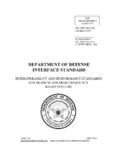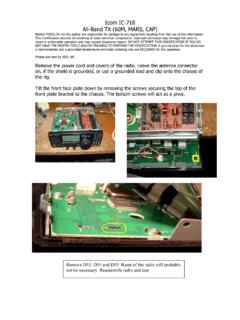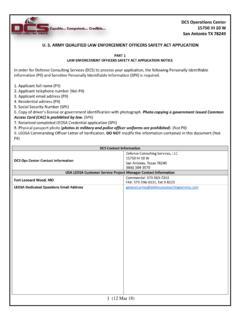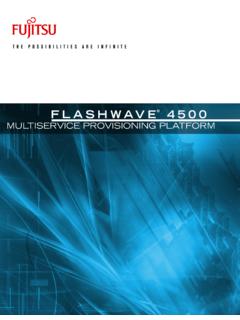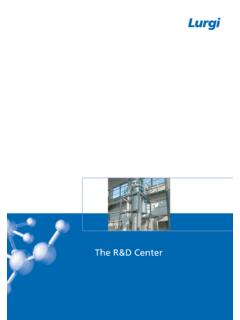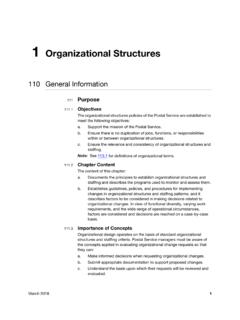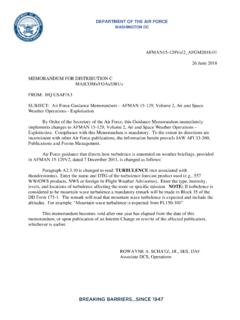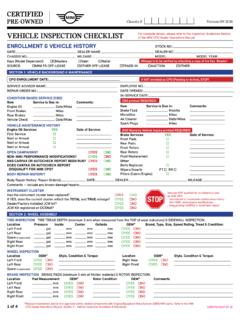Transcription of U.S. Department of Homeland Security Office of …
1 National Interoperability Field operations Guide Department of Homeland Security Office of emergency Communications version May 2015. i . First printing May 2015. INTRODUCTION. The National Interoperability Field operations Guide (NIFOG) is a technical reference for emergency communications planning and for radio technicians responsible for radios that will be used in disaster response. The NIFOG includes rules and regulations for use of nationwide and other interoperability channels, tables of frequencies and standard channel names, and other reference material, formatted as a pocket-sized guide for radio technicians to carry with them. If you are not familiar with interoperability and mutual aid communications, start with the How to Use the National Interoperability Field operations Guide . section. We encourage you to program as many of these interoperability channels in your radios as possible, as permitted by the applicable regulations.
2 Even if geographic restrictions on some channels preclude their use in your home area, you may have the opportunity to help in a distant location where the restrictions do not apply. Maximize your flexibility. To download or request copies of the NIFOG, please visit Your comments are welcome at Thank you. Ronald T. Hewitt, Director, Office of emergency Communications Ross Merlin, NIFOG Author, National Coordinating Center for Communications Department of Homeland Security TABLE OF CONTENTS. USING THE NATIONAL INTEROPERABILITY FIELD operations FCC Rules for NTIA Rules for How do I request a Special Temporary Authorization (STA)?.. 13. Regulations and Guidelines for National 18. Conditions for Use of Federal Interoperability Channels .. 19. Recommendations for Programming the Federal Interoperability 22. FCC Rules and 23.
3 NTIA Rules and 23. INTEROPERABILITY Non-Federal VHF National Interoperability 24. VHF Low 24. VHF High 25. VHF 26. Counties Where VTAC17/VTAC17D May Be 27. Texas Counties Where VTAC17/VTAC17D May be 28. VHF Public Safety Mutual Aid and Common 29. NOAA Weather Radio All Hazards 30. Federal / Non-Federal SAR Command Interoperability 31. Federal / Non-Federal VHF SAR operations Interoperability 32. VHF Incident Response (IR) Federal Interoperability 33. VHF Law Enforcement (LE) Federal Interoperability 34. UHF Incident Response (IR) Federal Interoperability 35. UHF Law Enforcement (LE) Federal Interoperability 36. Non-Federal UHF National Interoperability Repeater 37. UHF MED (Medical, EMS) 38. 700 MHz Nationwide Interoperability 43. 700 MHz Nationwide Air-Ground 49. Non-Federal 800 MHz National Mutual Aid Repeater 51.
4 25 Cities Project Federal Interoperability 52. COMMON COMMUNICATIONS operations Center Telephone 58. emergency Support Functions (ESF).. 59. FEMA Regions - States and 60. Coast Guard Rescue Coordination 61. CTCSS Tones and 62. DCS 63. P25 Digital 64. RS-232 Connectors (DB25 and DE9).. 65. RJ-45 66. IP Addresses - Private 67. WiFi GHz Non-Overlapping 67. Public Domain Name System (DNS) 68. Public Network Time Protocol (NTP) 68. CISCO Tactical 69. Telephone Block 70. Telephone 72. Telephone Keypad 73. N11 73. DSN Area 73. Cellular Telephone emergency 74. Satellite Phone Dialing 75. INMARSAT-M Service 77. Priority Telecommunications 78. GETS - Govt. emergency Telecommunications 78. WPS - Wireless Priority 78. TSP - Telecommunications Service 78. Text 80. Line-of-Sight 82. Notice to Airmen (NOTAM) Filing 83.
5 COMMONLY USED Aviation 84. VHF Marine Channel 85. VHF Marine Channels & 89. Multi-Use Radio Service (MURS).. 94. GMRS 95. FRS 95. CB 95. Common Business 96. Railroad 97. SAR (Search And Rescue) 98. Maritime HF and VHF Distress 99. HF Disaster HF Long Distance Standard Time and Frequency Standard Time by Amateur Radio emergency Amateur Radio Calling Amateur Radio Repeater Amateur Radio Bands (US)..106. Amateur Radio Power Limits (US)..112. emergency MEDICAL BACK COVER. USING THE NATIONAL INTEROPERABILITY FIELD operations GUIDE. What is the National Interoperability Field operations Guide ? The National Interoperability Field operations Guide (NIFOG) is a pocket-sized listing of land mobile radio (LMR) frequencies that are often used in disasters or other incidents where radio interoperability is required, and other information useful to emergency communicators.
6 Terms used in this document: FCC Federal Communications Commission FCC Rules contained in Title 47, Code of Federal Regulations (47 CFR). Federal used herein to differentiate between radio stations of the United States Government and those of any State, tribal, local, or regional governmental authority. Federal Frequencies . refer to frequencies (channels) available for assignment to Government Agencies. Although the FCC is a Federal Government agency, the frequencies it administers are not federal frequencies - they are administered for state/tribal/local governments, commercial entities, and individuals. NCC (1) the Public Safety National Coordination Committee, a Federal Advisory Committee formed by the FCC to advise it on interoperability; (2) National Coordinating Center for Telecommunications. 1 . NPSTC the National Public Safety Telecommunications Council is a federation of organizations whose mission is to improve public safety communications and interoperability through collaborative leadership.
7 After the charter for the NCC expired, NPSTC continued NCC's efforts to establish a common channel nomenclature. NPSTC channel IDs used in the NIFOG are based on the Standard Channel Nomenclature for the Public Safety Interoperability Channels , APCO ANS. , approved June 9, 2010 by the American National Standards Institute (ANSI) - see NTIA National Telecommunications and Information Administration NTIA Manual The NTIA Manual of Regulations and Procedures for Federal Radio Frequency Management Radio frequencies are in MegaHertz (MHz) unless otherwise noted. CTCSS tone frequencies are in Hertz (Hz) or two-character Motorola codes. Emissions on frequencies above 138 MHz are narrowband analog FM, unless otherwise noted. How is the NIFOG used? The NIFOG may be used by radio technicians when programming channels in radios.
8 We recommend having these channels programmed in radios at all times, as permitted by the applicable regulations, rather than waiting until a disaster is imminent or occurring to do the programming. The NIFOG also is a useful tool for emergency communications planners, providing them with information on the interoperability channels most likely to be in the radios of responders from another discipline or jurisdiction. 2 . Don't I need a license for these channels before programming them into radios? If you are licensed under Part 90 of the FCC rules, you may program frequencies (other than maritime or aviation) that you are not licensed to use IF the communications involved relate directly to the imminent safety-of-life or property or with Government stations .. in connection with mutual activities (see FCC rules and , and Public Notice DA 01-1621).
9 See Conditions for Use of Federal Interoperability Channels , page 19 - page 21. There are no restrictions on programming frequencies into Government radios. However, note that (g) requires that [f]or transmissions concerning the imminent safety-of-life or property, the transmissions shall be suspended as soon as the emergency is terminated. Also, the safety of life provision of (a) makes it clear that the exception applies only when the communications involved relate directly to the imminent safety of life or property. Because one overriding policy concern of the FCC is the prevention of harmful interference, any exceptions to the general prohibition on using non-licensed frequencies are limited to responding to an imminent threat to safety-of-life or property. See also dealing with communications during an emergency which disrupts normal communications facilities and dealing with civil defense communications.
10 Programming of maritime channels must be performed only by a person holding a first or second class radiotelegraph operator's certificate, a radiotelegraph operator license, or a general radiotelephone operator's license - 47 CFR (b)(3). See also (b)(4) and (a). A general radiotelephone operator must directly supervise and be responsible for all transmitter adjustments or tests during installation, servicing or maintenance of an aeronautical radio station - see 3 . How can I use these frequencies if I don't have a license for them? There are seven ways you can legally use these radio frequencies: 1. You or your employer may already have a Federal Communications Commission (FCC) license or a National Telecommunications and Information Administration (NTIA) authorization for some of the interoperability and mutual aid frequencies.
